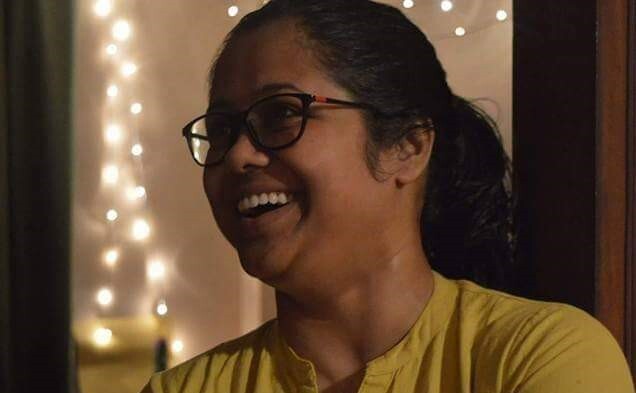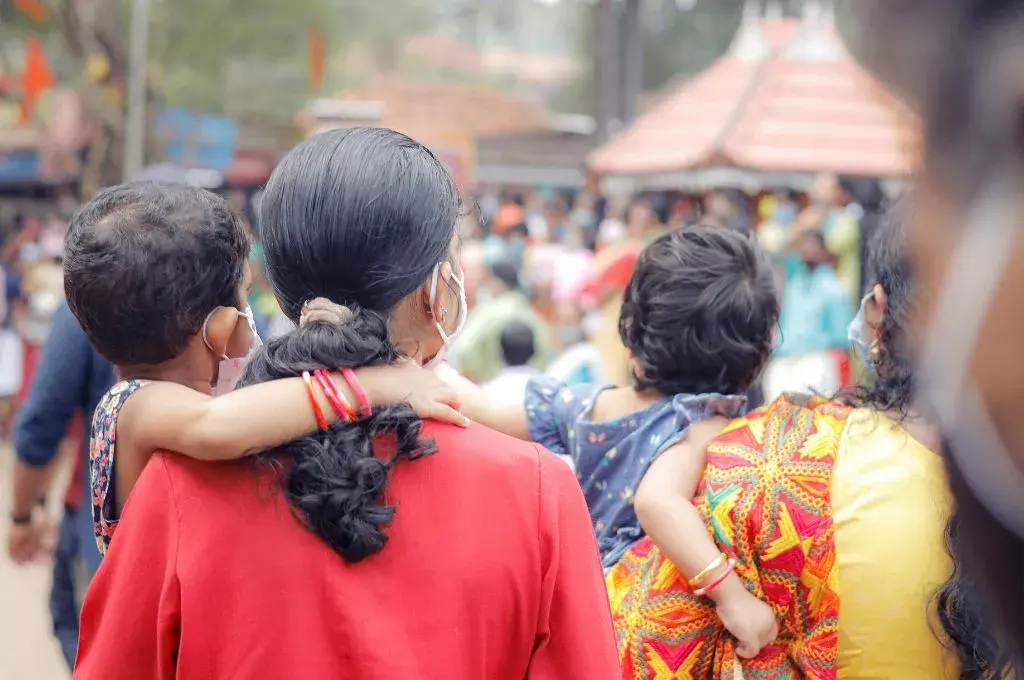The COVID-19 pandemic exposed vulnerabilities in healthcare systems across India. Access to healthcare became a challenge all over the nation. During this period, utilisation of general healthcare declined, and demand for COVID-related medicines, diagnostic tests, and hospital care increased.
Even in the pre-COVID years, Indians depended heavily on private services, but the situation worsened during the pandemic. Many instances of the private sector charging very high prices for providing healthcare came to light in 2020, 2021, and 2022, which had a catastrophic impact on households. On an average, the clinical cost of treating a COVID-19 patient in a private hospital rose to INR 11,000 per day for the general ward. Many were left in debt after their treatment.
India’s healthcare expenditure
This increase in the healthcare burden is, however, not represented in the official data from the government, which paints a different picture. It highlights that government expenditure on healthcare has increased, resulting in people having to spend less money from their own pocket. In order to substantiate this, the government is emphasising that the percent of public expenditure on healthcare in current health expenditure (CHE) has been increasing and within CHE, out-of-pocket expenditure (OOPE) is decreasing.
According to the National Health Accounts (NHA), CHE refers to “only recurrent expenditures for healthcare purposes net all capital expenditures”. This means expenditure contributed by all union, state, and local government bodies; private entities such as insurance and donors; and so on. The NHA data indicates that the portion of public expenditure on healthcare in relation to CHE was approximately 27 percent in 2016–17. This saw an increase to 33 percent in 2017–18 and further rose to 35 percent in 2019–20. On the other hand, OOPE indicates direct payments made by individuals for any medical service. These are payments not covered by a third party, including the government or any health insurance. The NHA data shows that OOPE in India has been declining steeply. It decreased from 63 percent of CHE in 2016–17 to 55 percent in 2017–18 and has continued to decline. In 2019–20, it was approximately 52 percent.
This trend suggests a rising investment in India’s healthcare by the government, seemingly relieving the burden on the public. However, a closer inspection reveals that this is a simplistic reading.
What is NHA and how does it calculate health data?
Since these health trends are derived from data provided by NHA, it is important to understand what NHA is and how its estimates are calculated.
NHA is an accounting framework that estimates the annual health spending of an economy through a methodology that makes the estimates internationally comparable. It follows the globally used standard framework called System of Health Account (SHA), designed by the World Health Organization.
NHA produces estimates of public expenditure, private expenditure, OOPE, and so on by using the following mechanisms:
1. Government expenditure: NHA uses both union and state budget data and the data collected from the official documents of local bodies such as panchayats and municipal corporations for estimating government expenditure.
2. OOPE: To estimate OOPE, it uses the National Statistical Office’s (NSO) rounds on ‘Social Consumption: Health’ and ‘Consumption Expenditure Survey’(CES). The report also uses data from the Government of India’s ‘National Family Health Survey’ (NFHS).
A major component of OOPE on healthcare is estimated from ‘Social Consumption: Health’ since the survey collects information extensively on utilisation of and expenditure on healthcare, and gathers details of both inpatient and outpatient services along with types of ailments. CES also collects information on expenditure on healthcare; however, it does not do so on utilisation of services and types and incidences of ailments. NFHS is undertaken by the government; it collects household information with a special focus on maternal and child health and nutrition. Along with these data sets, since 2017–18, sales data from IQVIA (an analytics and technology provider based in the USA) has also been used to capture expenditure on vaccines, vitamins, minerals, and other supplements.
3. Total healthcare expenditure: Unlike CHE, total healthcare expenditure (THE) includes both current and capital expenditure on healthcare. While current expenditure means day-to-day operational costs such as services and medicines, capital expenditure indicates long-term costs such as infrastructure development, which could include machines or buildings. Capital goods typically have a lifespan of a few years. This means that spending money on a machine or a building should not be considered as only that year’s expenditure since these assets will be used in the years to follow. Therefore, one has to annualise expenditure on capital goods factoring in its depreciation cost. Since it is technically not feasible to annualise capital expenditure incurred by the providers every year, and thus not possible to eliminate the risk of overcounting, using estimates in proportion to CHE is considered a good practice.

Why this produces inaccurate data
Due to the absence of any nationally representative updated database on OOPE, it is not possible to estimate indicators without error. The magnitude of error would be higher with more outdated databases. Here are some causes of concern:
1. NSO relies on outdated census data
Since it is not possible to cover the entire population of the country for their survey, NSO carries out a sample survey for collecting data. It uses census data for designing sampling frames (the list of individuals the sample survey is drawn from). However, since no new census data has been published after 2011, it is impossible to have an appropriate sampling design and frame for NSO.
2. No new CES has been conducted since 2011
The last CES was carried out in 2011–12. NHA has been using that same old data set for estimating expenditure on therapeutic appliances. Such old data is bound to estimate utilisation and expenditure incorrectly. One may always argue that the magnitude of error for using such an outdated database will not be huge as the item comprises a very negligible proportion of THE or CHE. However, this imposes different challenges. For example, while estimating expenditure on therapeutic appliances for the state of Telangana, which did not exist in 2011–12 and was formed in 2014, one has to make a series of assumptions.
3. ‘Social Consumption: Health’ data is from the demonetisation year
A major chunk of the OOPE is estimated using data from ‘Social Consumption: Health’. However, the last NSO ‘Social Consumption: Health’ round was published in 2018. The survey was conducted in 2017–18 with a reference period of one year. This means that the survey collects information on healthcare expenditure incurred during 2016–17, a year in which demonetisation was imposed. As a result, poor and middle-income families (that primarily spend and transact using cash) didn’t have the money to buy food and other necessities. This had a spillover effect on their ability to spend on healthcare.
The same data set has been used for estimating OOPE for the years since then. Although it has been adjusted for inflation and projected population growth in order to produce the estimates, the data doesn’t reflect changes in the demand for healthcare accurately.
The year 2016–17 was an anomaly because of demonetisation, and any approximation based on it is likely to produce incorrect results. It was a period when people were struggling for cash. For many, the usual alternatives didn’t exist: Their savings in cash had no meaning; there was nowhere to borrow from; and, since the economy as a whole was suffering, they perhaps didn’t even have a market to sell their assets and pay for healthcare.
It would therefore be incorrect to assume that people wouldn’t have accessed these options in the subsequent years. So the OOPE is likely to have increased from 2016–17 to 2019–20.
Is the situation likely to change?
The NHA for FY 2020–21 will be published soon, and this round may show a further decline in the share of OOPE in contrast to the increasing share of public expenditure on health due to the absence of a new round of ‘Social Consumption: Health’ and updated information on public expenditure.
Public expenditure on healthcare is lower than the desired level in India. The Union Government’s expenditure on health hovered around 0.4 percent of the GDP for most of the years during 2014–15 to 2018–19, barring 2017–18 when it increased to 0.55 percent followed by a decline.
There was a miniscule increase in allocation for health emergencies in 2021 due to COVID-19, but this was discontinued after two years.
The latest NHA data builds the illusion that everything is fine with India’s public healthcare. Absence of updated data and inaccurate estimation of OOPE shows the government in a good light and allows it to shrug off responsibility and accountability.
What the government needs to do instead is increase allocation for healthcare and collect and publish data in a timebound manner; this will aid the framing of better policies.
Mampi Bose is a faculty member at Azim Premji University. The views and opinions expressed in this article are those of the author and do not necessarily reflect the views or positions of the organisation they represent.
--
Know more
- Read this article to learn how Ayushman Bharat fares in its commitment towards all Indians.
- Read this article to understand why the government’s estimation of OOPE is inaccurate.





